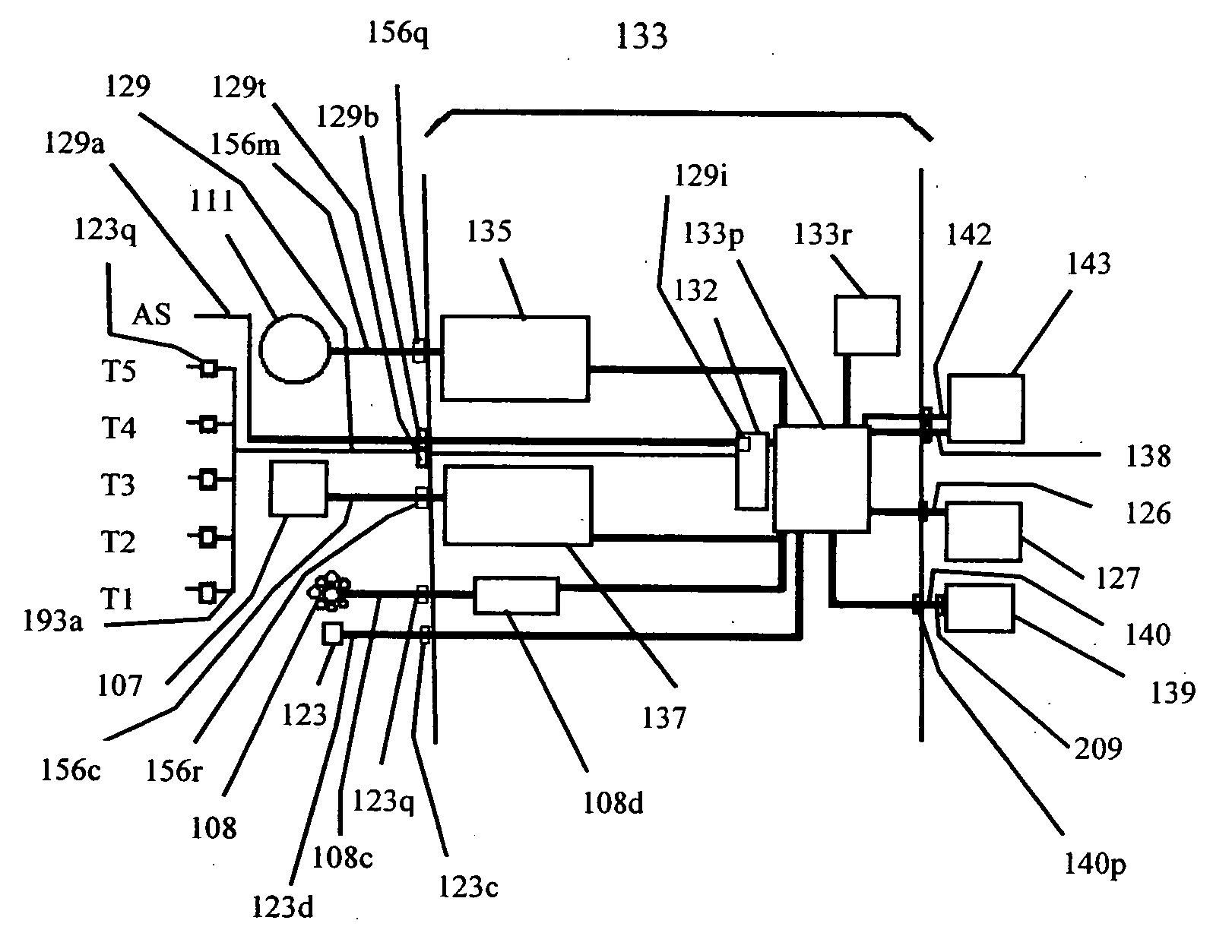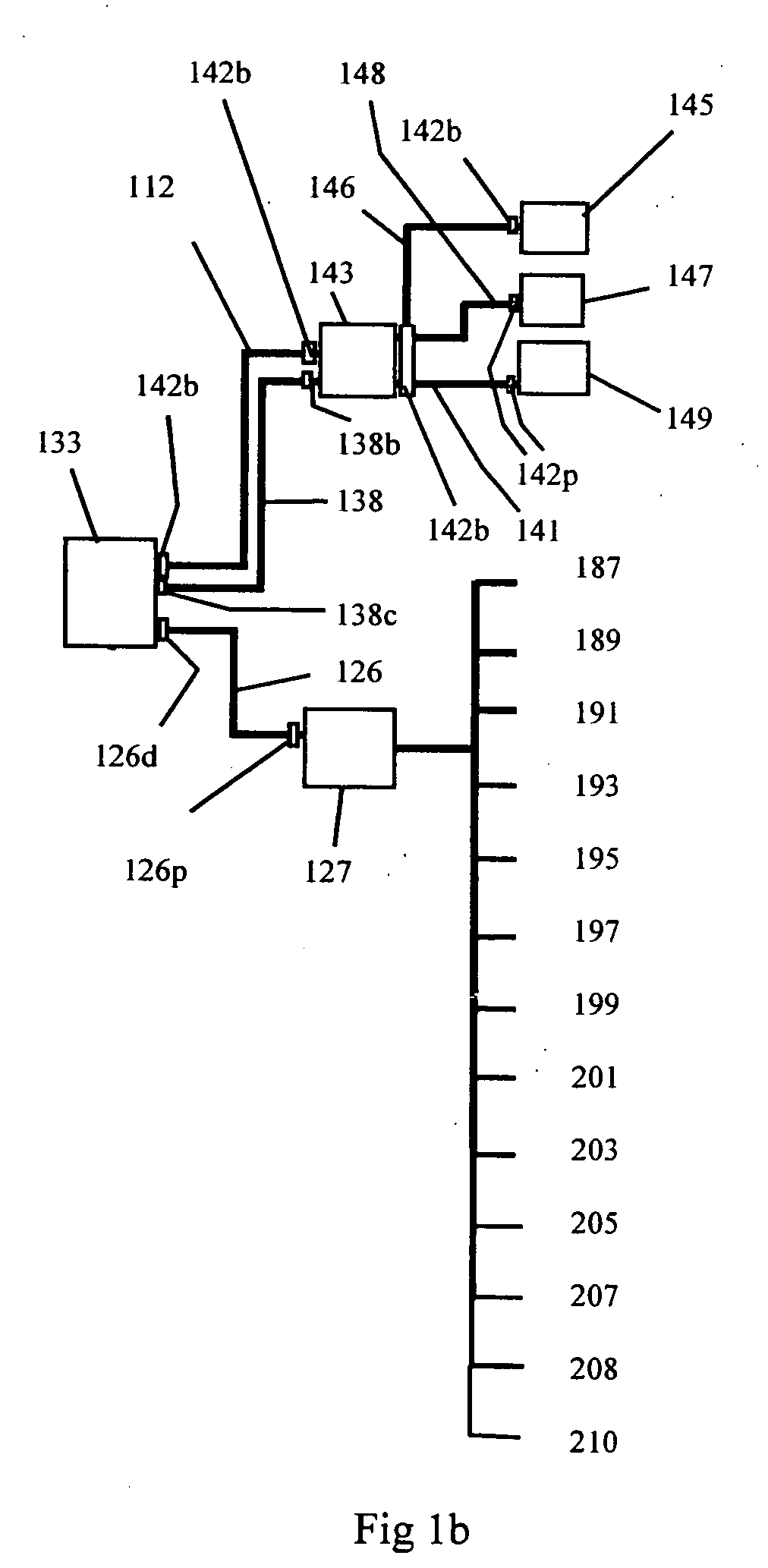System and method for smart system control for flowing fluid conditioners
a technology of smart system control and flowing fluid, which is applied in the direction of fluid couplings, rotary clutches, instruments, etc., can solve the problems of temperature directly affecting the performance of an internal combustion engine, operation problems, and catastrophic failures, so as to increase the fuel, reduce the boost level, and improve the effect of fuel
- Summary
- Abstract
- Description
- Claims
- Application Information
AI Technical Summary
Benefits of technology
Problems solved by technology
Method used
Image
Examples
Embodiment Construction
[0043] Reference will now be made to the drawings wherein like structures will be provided with like reference designations.
Hardware Overview of the Preferred Embodiment
[0044]FIG. 1a discloses a block diagram of the SSCFFC with details of the controller 133. The heart of controller 133 is a DSP processor 133p. The processor 133p is a multi-function processor with sensing, processing and controlling capabilities such as a PIC 16F877 from Microchip Technology (www.microchip.com). The processor 133p monitors system components and receives system data inputs, and uses software to combine this information with resident tables from previous operations and host vehicle operating specifications, and executes system control functions. A real time clock 133r provides timing and synchronization capabilities. The controller 133 is housed in rugged plastic enclosure KS 1423 from Rittal company (www.rittal.co.uk). A sensor interface 132 is provided for amplification and conversion of sensor si...
PUM
 Login to View More
Login to View More Abstract
Description
Claims
Application Information
 Login to View More
Login to View More - R&D
- Intellectual Property
- Life Sciences
- Materials
- Tech Scout
- Unparalleled Data Quality
- Higher Quality Content
- 60% Fewer Hallucinations
Browse by: Latest US Patents, China's latest patents, Technical Efficacy Thesaurus, Application Domain, Technology Topic, Popular Technical Reports.
© 2025 PatSnap. All rights reserved.Legal|Privacy policy|Modern Slavery Act Transparency Statement|Sitemap|About US| Contact US: help@patsnap.com



